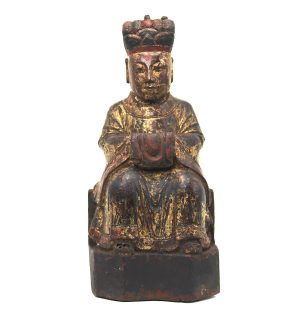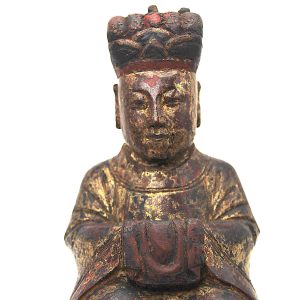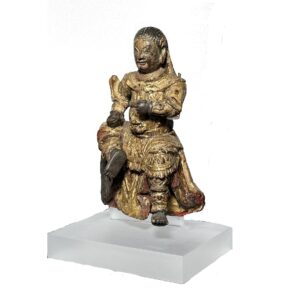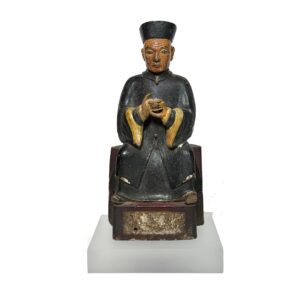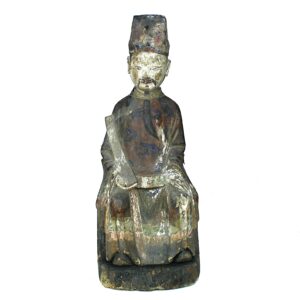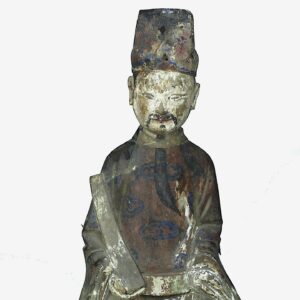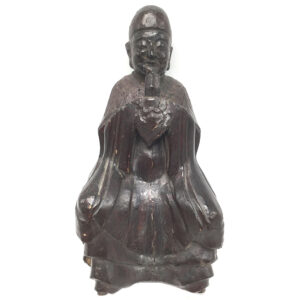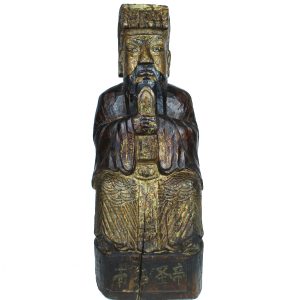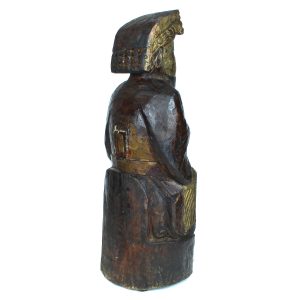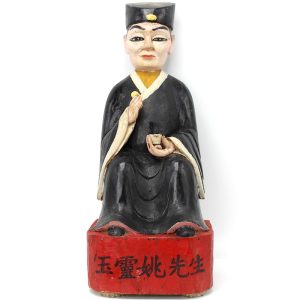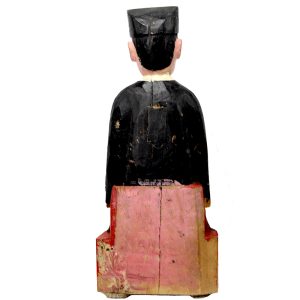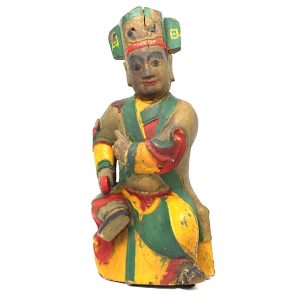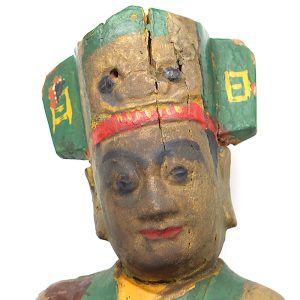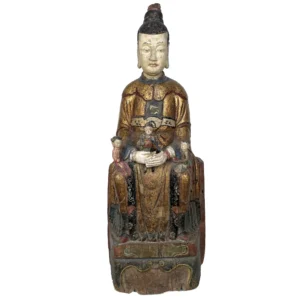-
Sale!


$350.00 Original price was: $350.00.$250.00Current price is: $250.00.
H: 9.25″ W: 4.5″ D: 3.25″ | FREE SHIPPING WITHIN CONTINENTAL U.S.
Taoist official home altar carving painted on front and back with red, gilt and lacquer. Hands under ritual cloth symbolically holding a hu tablet associated with Taoist officials. Taoist were responsible for protecting against evil in this life, Buddhist for souls in next life.
-
Sale!


$375.00 Original price was: $375.00.$295.00Current price is: $295.00.
H: 8.25″ W: 5.5″ D: 4″ | FREE SHIPPING WITHIN CONTINENTAL U.S.
Statues of Guandi, the God of War and Justice were displayed in Temples and home shrines throughout China. Part of a larger carving, wears military maille, has taotie – a warning against gluttony – and is covered in gold as a sign of power.
-
Sale!


$675.00 Original price was: $675.00.$495.00Current price is: $495.00.
Ht: 9″ W: 5″ D: 3.5″ | FREE SHIPPING WITHIN CONTINENTAL U.S.
Masterfully crafted Taoist official with calm, sincere and expressive face with creases indicating his age and wisdom of his senior status. Holds ritual cup with the elixir of immortality, a wish for a long and happy afterlife. Mounted on an acrylic stand.
-
Sale!


$295.00 Original price was: $295.00.$215.00Current price is: $215.00.
H: 12.875″ W: 5″ D: 2.75″ | FREE SHIPPING WITHIN CONTINENTAL U.S.
Probably placed on a home altar with other carving, this Taoist official holds a long, curved hu, wearing a high hat, collared robe with painted cobalt blue clouds and official’s belt. Consecrated with original script inside.
-
Sale!


$295.00 Original price was: $295.00.$215.00Current price is: $215.00.
H: 10.5″ W:5″ D: 4″ | FREE SHIPPING WITHIN CONTINENTAL U.S.
Taoist official/priest on backless chair, arms at chest and hands covered by ritual cloth symbolically holding a hu tablet. Darkened by incense and candle smoke from ritualistic offerings it was re-lacquered probably in early 20th-century.
-
Sale!


$395.00 Original price was: $395.00.$295.00Current price is: $295.00.
When ancestral images are taken out of context they are very difficult to identify so we describe them in generic terms as a Chinese Officials or Taoist Officials. This carving may represent the noted historical figure the principal regent Dorgon of the first Qing Emperor Shunzhi who ruled from 1643-1650 as a”quasi” emperor based on…
-
Sale!


$215.00 Original price was: $215.00.$155.00Current price is: $155.00.
Ht: 14.75” W: 7.75” D: 4” | FREE SHIPPING WITHIN CONTINENTAL U.S.
Taoist priest in formal attire holding a cup with the elixir of health and longevity and small ingot symbolizing wish for prosperity and wealth. Characters on base are his name and the mythical “turtle spirit” that symbolizes longevity,
-
Sale!


$395.00 Original price was: $395.00.$295.00Current price is: $295.00.
H: 13.6 ” W: 7″ D: 5.5″ | FREE SHIPPING WITHIN CONTINENTAL U.S.
Taoist priest or shaman with a double-winged hat with a mythical taotie as a warning against greed and excess. His left hand in the Sword Gesture to cast out evil and right holding a tael symbolizing wealth and good fortune
-


$6,500.00
H: 43″ W: 15″ D: 9.75 | SOLD
This large rare vibrant carving is the Taoist Deity of fertility Niangniang (“The Maiden Who Brings Children”) is often confused with Songzi Guanyin. Represented as an empress like figure, she glances serenely at 3 diminutive children, 2 males and a female extending their arms for protection. Stunning and peaceful, it is covered with gold highlights with intricate details.
End of content
End of content

